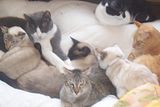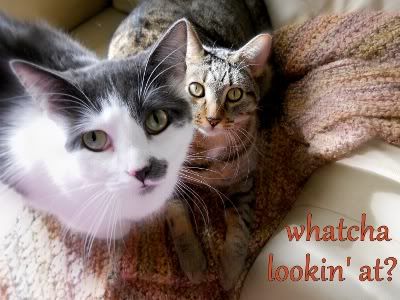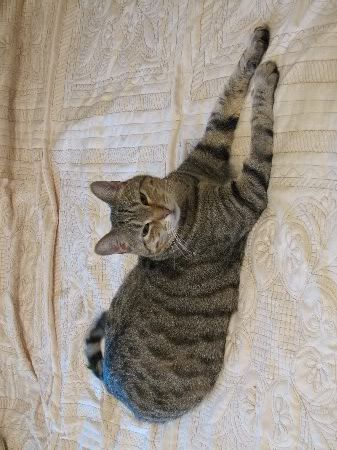Most cats, particularly males tend to have crystals in their urine. Most of the time it doesn't cause any problems, but once in a while it can. Things like stress, Ph balance upset, food changes, infections etc. can cause things to go haywire.
Did the vet that did the urinalysis happen to mention anything about the leukosites (sp?) or Ph balance? Leukosites tend to show infection, and an off Ph balance can lead to infections or stones. Antibiotics would take care of infections and there are meds to help with the Ph balance. My Cami takes one called MethioForm tabs.
There are two types of crystals, one can be dissolved with a special diet and the other can't. The one that can't is the Oxilate crystals. Did your vet specify which crystals your kitty has?
http://www.marvistavet.com/html/body...er_stones.html
At our hospital we use both Hills C/D and Royal Canin S/O with similar success, it's just a matter of which food the cats prefer. You're fortunate that your cat isn't picky. The pet store urinary foods do seem to have some effect on minor urinary problems, but major problems like your cat has requires a special diet which while more expensive will do a better job.
Wet food and plenty of water do help to keep things flushed out. Adding a pet water fountain may help encourage your cat to drink more water as well as using more canned food to add water to the diet.
There has been research into using glucosamine supplements with urinary problems and research suggests it helps. We do use that at our hospital as well although ours is Cosaquin. While I can't say for certain exactly what percent it helps with the problem, it doesn't have bad side effects, and has the added benefit of helping joints stay healthy as the cat ages.
Anytime there is an infection or irritation in the bladder the lining of it will be thicker, and may always be even after the problem gets resolved because of scar tissue.
As a precaution you may want to take regular urine samples to your vet, say like once a month for a while then maybe twice a year once things settle down. That way you are more likely to catch a problem before it gets bad.
In some cases cats can have cronic problems to which no one knows exactly how to 'cure' it. Best thing in those situations is to manage the symptoms as they pop up. I'm sure your vets are just as frustrated as you are with the whole situation with your kitty. Their job is to help animals and they also get frustrated when they can't fix everything.
I hope your vets can find the right food/med combo that helps your kitty from having frequent flare ups. Good luck.






 Reply With Quote
Reply With Quote







 ❤️❤️
❤️❤️



 RIP Sabrina June 16 2011
RIP Sabrina June 16 2011 I'm very surprised they did manual expression when your cat obviously has large crystals... that can easily cause blockage and rupture the bladder
I'm very surprised they did manual expression when your cat obviously has large crystals... that can easily cause blockage and rupture the bladder 


Bookmarks